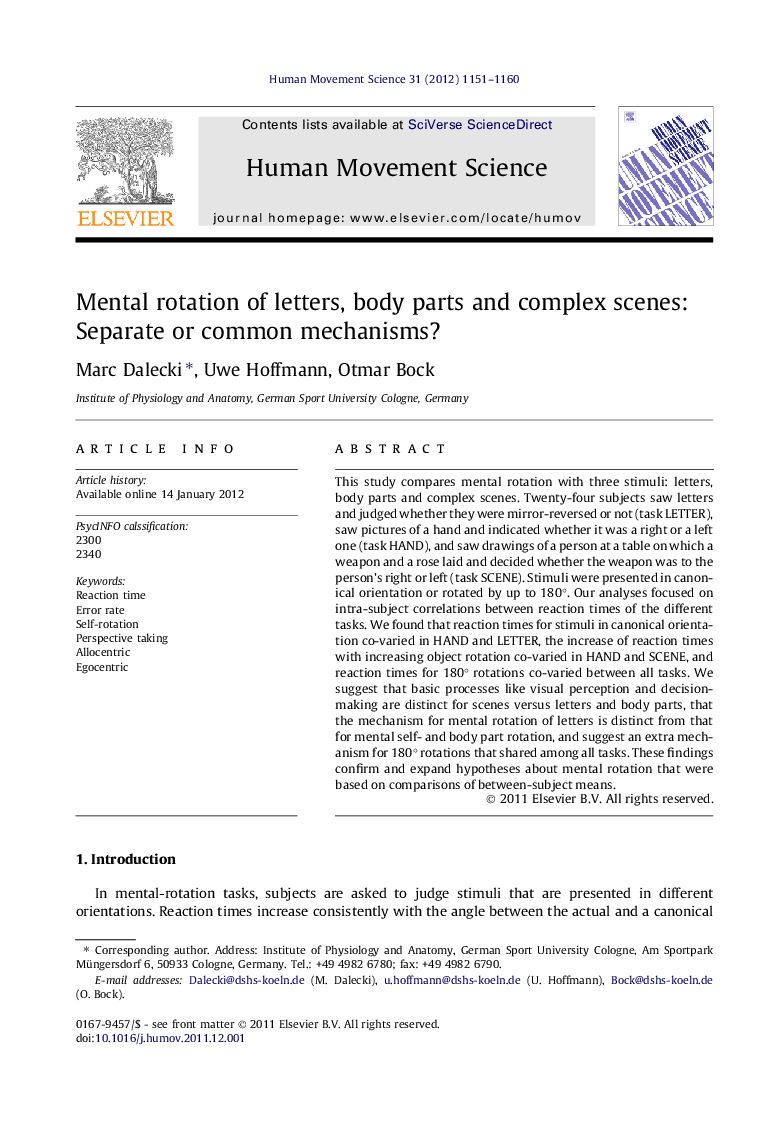| Article ID | Journal | Published Year | Pages | File Type |
|---|---|---|---|---|
| 928376 | Human Movement Science | 2012 | 10 Pages |
This study compares mental rotation with three stimuli: letters, body parts and complex scenes. Twenty-four subjects saw letters and judged whether they were mirror-reversed or not (task LETTER), saw pictures of a hand and indicated whether it was a right or a left one (task HAND), and saw drawings of a person at a table on which a weapon and a rose laid and decided whether the weapon was to the person’s right or left (task SCENE). Stimuli were presented in canonical orientation or rotated by up to 180°. Our analyses focused on intra-subject correlations between reaction times of the different tasks. We found that reaction times for stimuli in canonical orientation co-varied in HAND and LETTER, the increase of reaction times with increasing object rotation co-varied in HAND and SCENE, and reaction times for 180° rotations co-varied between all tasks. We suggest that basic processes like visual perception and decision-making are distinct for scenes versus letters and body parts, that the mechanism for mental rotation of letters is distinct from that for mental self- and body part rotation, and suggest an extra mechanism for 180° rotations that shared among all tasks. These findings confirm and expand hypotheses about mental rotation that were based on comparisons of between-subject means.
► This study compares mental rotation with three stimuli: letters, body parts and complex scenes. ► To our knowledge, this is the first study which compares all three stimulus categories. ► Our analyses focused on intra-subject correlations between reaction times of different tasks. ► Reaction times co-varied with increasing rotation in body parts and scenes but not letters. ► Data indicate that mental rotation mechanism of letter is distinct from self and body part rotation.
